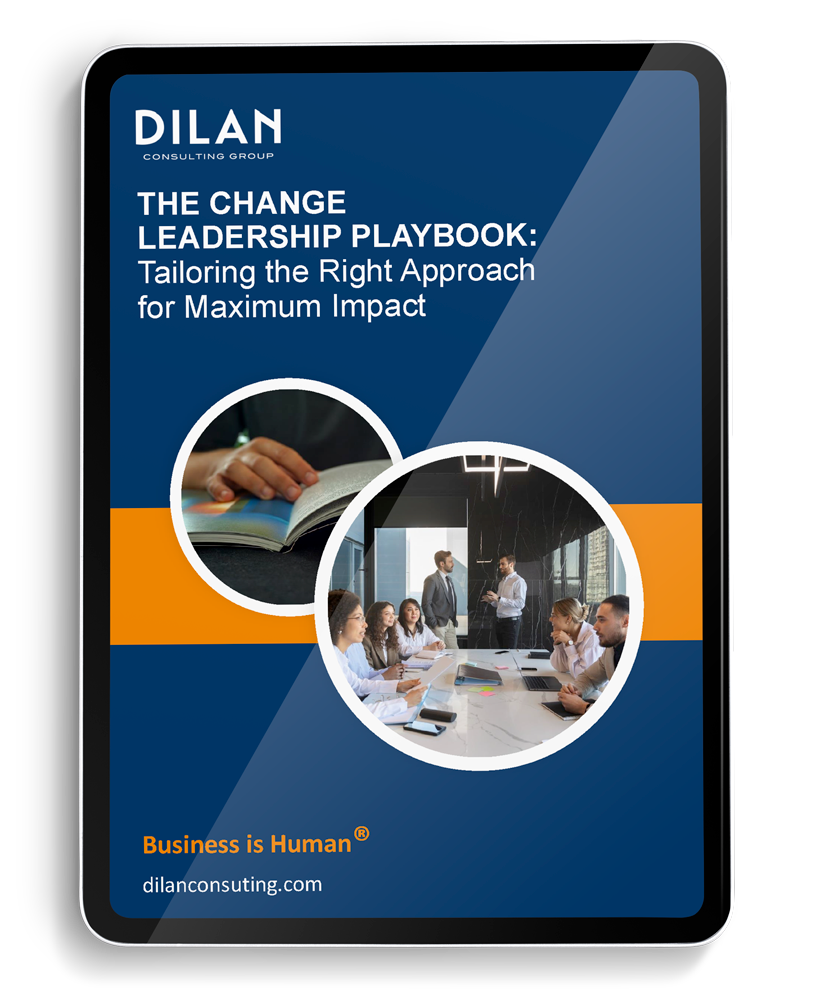In fast-moving organizations, strategic thinking often takes center stage — and for good reason. A sharp CEO, a visionary CPO, or a data-driven CFO can unlock major business wins. But what happens when that strategic brilliance isn’t matched by emotional intelligence (EI)?
Many HR and executive leaders have seen it: exceptionally talented executives who drive performance but struggle to build trust, navigate difficult conversations, or respond with empathy. When emotional intelligence is missing at the top, it can quietly undermine everything from engagement and retention to innovation and culture.
This piece explores why emotional intelligence gaps often appear in senior leaders, why conventional coaching doesn’t always close them, and how HR can help leaders grow in ways that strengthen both their leadership and the business.
Why Emotional Intelligence Falls Through the Cracks
- Success Outpacing Self-AwarenessEmotional intelligence — the ability to recognize, regulate, and respond to emotions (your own and others’) — is a critical leadership capacity. Yet many executives reach senior roles through intellectual or technical excellence, not emotional mastery.
As leaders advance, they often receive less candid feedback, and the pace of their success can outstrip the development of self-awareness. Without realizing it, they can begin to lead through intellect and authority rather than empathy and connection.
Example: A visionary founder who once inspired teams with passion now dismisses input as “noise.” A COO who excels under pressure becomes curt and reactive in high-stakes meetings. Their behaviors are signals — not of intent, but of stress, blind spots, or underdeveloped emotional agility.
Why it matters: Leaders who don’t stay attuned to how their emotions and behaviors affect others can unintentionally erode trust and psychological safety, even while achieving results.
- Neurodiversity and Different Emotional ProcessingSometimes, what looks like a lack of emotional intelligence stems from a difference in how a leader’s brain processes information and emotion.
Executives with ADHD, autism spectrum conditions, or other forms of neurodiversity may find it harder to interpret social cues, manage impulsivity, or modulate tone in emotionally charged discussions. These challenges often coexist with extraordinary strengths — such as focus, innovation, or pattern recognition — that helped them rise in the first place.
Example: A CTO who interrupts may not be dismissive — they may be managing a racing mind. A data-focused CFO who avoids small talk may not be cold — just wired to prioritize precision over rapport.
Why it matters: When organizations interpret these differences solely as “low EI,” they miss an opportunity to provide support, understanding, and accommodations that bring out a leader’s full potential.
- Promotions Based on Technical Skill, Not People LeadershipMany organizations promote high performers based on results, not relationships. They reward analytical thinking, decisiveness, and operational excellence — but overlook empathy, coaching ability, or emotional regulation.
Once in leadership roles, these executives face entirely new demands: influencing through trust, navigating conflict, and creating belonging. Without development in these areas, their technical competence can quickly become a barrier to connection.
Example: A brilliant engineer becomes VP of Engineering. Suddenly, they’re spending more time managing people than writing code — and they’re out of their depth. Delegation becomes micromanagement, and feedback sounds like criticism.
Why it matters: Leaders without strong relational skills can unintentionally create disengagement and burnout on otherwise high-performing teams.
- High-Growth Cultures That Reward Speed Over ReflectionIn startup or high-growth environments, the mantra is often “move fast.” Execution trumps introspection. The culture rewards decisiveness, resilience, and grit — but rarely patience or reflection.
Example: A founder resists HR’s suggestion to conduct a listening tour: “We don’t have time for feelings.” Months later, key hires leave, feedback loops collapse, and silos harden.
Why it matters: You can scale a product without scaling culture — but not indefinitely. Emotionally intelligent leadership is the engine of sustainable growth and psychological safety.
- Fear of Failure and Emotional Defensiveness
Even the most accomplished leaders can struggle with vulnerability. Success often reinforces the belief that showing uncertainty equals weakness. When challenged, these leaders protect their identity by deflecting, rationalizing, or shutting down.Example: A CEO hears constructive feedback and immediately replies, “That’s not how I remember it.” Beneath the defensiveness is fear — fear of not being enough or of being exposed as fallible.Why it matters: Without a safe space to unpack those fears, leaders repeat the same patterns, undermining trust and learning opportunities.
- Cultural Contexts and Global Leadership Norms
Emotional expression and empathy look different across cultures. In some places, restraint conveys professionalism; in others, openness builds connection. When organizations impose a single “EI standard,” they risk alienating global leaders whose cultural norms differ.Example: A U.S. manager sees a Japanese colleague’s reluctance to give public praise as aloofness, while that leader views humility as respect. Both are acting with integrity — but without cultural intelligence, misunderstanding grows.Why it matters: Emotional intelligence requires cultural sensitivity. HR’s role includes helping teams interpret intent through a global, not parochial, lens.
Why Traditional Coaching Doesn’t Always Work
Coaching can be transformative — but only if it addresses what’s beneath the surface. Many programs fail because they:
- Focus on performance goals while avoiding emotions
- Treat behavior as a problem to fix rather than a pattern to understand
- Lack psychological or cultural depth
To build lasting change, leaders need coaching that integrates emotional insight, self-reflection, and systemic context.
How HR Can Respond — Without Burning Bridges
- Frame It as Strategy, Not Soft Skills
If the phrase emotional intelligence triggers resistance, reframe it around outcomes: retention, innovation, team alignment, and culture. - Build Insight, Not Just Awareness
Use tools like 360° feedback, reflective debriefs, or values-based assessments to help leaders connect behavior with impact — without judgment. - Bring in the Right Support
Choose coaches who can operate at the intersection of psychology, leadership, and business systems. Use the L.A.S.T.I.C.A. framework to guide your selection:Letter What to Look For
L Leadership and psychological fluency
A Assessment expertise (360s, EQ-i, Hogan, etc.)
S System-level thinking — team and org dynamics
T Ability to build trust with skeptical executives
I Individualized, evidence-based development plans
C Clear tracking of behavior change
A Alignment with HR strategy - Make Emotional Growth a Leadership Competency
Recognize and reward leaders who show empathy, adaptability, and openness to feedback. Make these behaviors part of performance metrics and succession plans. - Support the System, Not Just the Individual
Emotional intelligence flourishes in psychologically safe environments. Use team coaching, peer reflection, and structured feedback loops to reinforce learning across the organization.
Final Thought: Emotional Intelligence Is Strategic, Not Soft
When emotional intelligence is missing at the top, the effects ripple through the organization — disengaged teams, talent loss, stalled innovation, eroded trust.
But this isn’t about blame; it’s about capacity. Every leader can expand their emotional range, self-awareness, and relational agility. HR’s role is to create the right conditions for that growth — combining empathy with accountability.
In today’s workplace, emotional intelligence isn’t a luxury. It’s one of the most strategic assets any organization can build.
References
Baron-Cohen, S., Wheelwright, S., Hill, J., Raste, Y., & Plumb, I. (2001). The “Reading the Mind in the Eyes” test revised version: A study with normal adults, and adults with Asperger syndrome or high-functioning autism. Journal of Child Psychology and Psychiatry, 42(2), 241–251.
Enterprise Research Centre. (2021). Neurodivergent entrepreneurs: The case of autism.
Goldman Sachs & Genius Within. (2022). Neurodiversity: The next frontier in inclusive leadership.
Goleman, D. (1995). Emotional intelligence: Why it can matter more than IQ. Bantam Books.
Hill, L. A., Brandeau, G., Truelove, E., & Lineback, K. (2014). Collective genius: The art and practice of leading innovation. Harvard Business Review Press.
House, R. J., Hanges, P. J., Javidan, M., Dorfman, P. W., & Gupta, V. (Eds.). (2004). Culture, leadership, and organizations: The GLOBE study of 62 societies. Sage Publications.
Kets de Vries, M. F. R. (2006). The leader on the couch: A clinical approach to changing people and organizations. Jossey-Bass.
Lerner, D. A., Hunt, R. A., & Verheul, I. (2019). Dopamine, smartphones & entrepreneurship: An exploration of ADHD, impulsivity, and entrepreneurial intention. Journal of Business Venturing, 34(6), 105875.
Surman, C. B. (2011). ADHD in adults: What the science says. In Barkley, R. A., Murphy, K. R., & Surman, C. B. (Eds.), ADHD in adults: What the science says (pp. 24–50). Guilford Press.
Thurik, R., Khedhaouria, A., Torrès, O., & Verheul, I. (2016). Psychological traits and the entrepreneur gender gap: Evidence from France. Small Business Economics, 47(4), 807–820.
Wasserman, N. (2012). The founder’s dilemmas: Anticipating and avoiding the pitfalls that can sink a startup. Princeton University Press.



